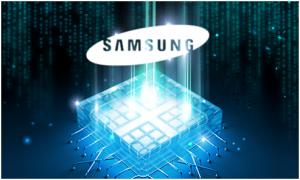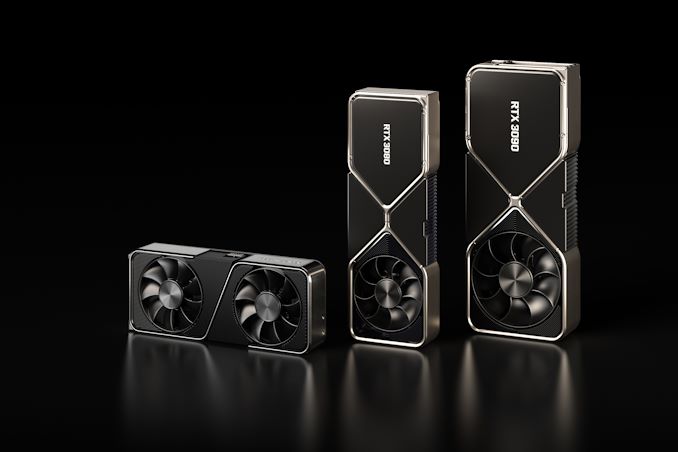I am checking "Samsung's current yield rate on 7nm is about 80%" from this interview. It was not at "approximately the 7:40 minute mark". Is it sure?The Moore's Law is Dead YouTuber stated that he was told that Samsung's current yield rate on 7nm is about 80% (at approximately the 7:40 minute mark).
Quick notes:
1. Daniel also recently appeared on his YouTube video. I didn't see anyone mentioning it but you can view it here:2. I didn't realize it until recently but SemiWiki also has a YouTube channel! You can visit it here: https://www.youtube.com/channel/UCHdjD8mzAU_nV3OJSCZY9pw or click the YouTube icon in the upper right-hand corner of the site.
Array
(
[content] =>
[params] => Array
(
[0] => /forum/index.php?threads/what-about-samsung.12823/page-2
)
[addOns] => Array
(
[DL6/MLTP] => 13
[Hampel/TimeZoneDebug] => 1000070
[SV/ChangePostDate] => 2010200
[SemiWiki/Newsletter] => 1000010
[SemiWiki/WPMenu] => 1000010
[SemiWiki/XPressExtend] => 1000010
[ThemeHouse/XLink] => 1000970
[ThemeHouse/XPress] => 1010570
[XF] => 2021370
[XFI] => 1050270
)
[wordpress] => /var/www/html
)
Guests have limited access.
Join our community today!
Join our community today!
You are currently viewing SemiWiki as a guest which gives you limited access to the site. To view blog comments and experience other SemiWiki features you must be a registered member. Registration is fast, simple, and absolutely free so please, join our community today!
You are using an out of date browser. It may not display this or other websites correctly.
You should upgrade or use an alternative browser.
You should upgrade or use an alternative browser.
What about Samsung?
- Thread starter prime007
- Start date
Ampere was reported to be 7nm from TSMC not Samsung.The Moore's Law is Dead YouTuber stated that he was told that Samsung's current yield rate on 7nm is about 80% (at approximately the 7:40 minute mark).
Quick notes:
1. Daniel also recently appeared on his YouTube video. I didn't see anyone mentioning it but you can view it here:2. I didn't realize it until recently but SemiWiki also has a YouTube channel! You can visit it here: https://www.youtube.com/channel/UCHdjD8mzAU_nV3OJSCZY9pw or click the YouTube icon in the upper right-hand corner of the site.
Samsung is partners with IBM with power 10 at 7nm.
Samsung also does chips for Nvidia, Qualcomm, eSilicon (Cisco and others). Nobody wants a single semiconductor foundry option for leading edge designs so there will always be an alternative, no matter how challenged they are. AMD has always been an Intel alternative and look at the comeback they have made based on that. Intel could definitely be a leading edge foundry alternative if they had a mind for it.
You probably missed my hyperlink. You have to click on "Moore's Law is Dead" (NOT the YouTube video shown in the Quick note) OR just click here to watch it...its set at the 7:40 minute mark:I am checking "Samsung's current yield rate on 7nm is about 80%" from this interview. It was not at "approximately the 7:40 minute mark". Is it sure?
Ok, I found it and thank you. By the way, if it is true, then the foundry competition will be totally different now.You probably missed my hyperlink. You have to click on "Moore's Law is Dead" (NOT the YouTube video shown in the Quick note) OR just click here to watch it...its set at the 7:40 minute mark:
P
Portland
Guest
Samsung also does chips for Nvidia, Qualcomm, eSilicon (Cisco and others). Nobody wants a single semiconductor foundry option for leading edge designs so there will always be an alternative, no matter how challenged they are. AMD has always been an Intel alternative and look at the comeback they have made based on that. Intel could definitely be a leading edge foundry alternative if they had a mind for it.
The weird thing was ibm hasn't done much in years and now they did something relevant.
A bit of a surprise to me but RTX 30X0 series using Ampere is now reported as 8nm.

 www.pcgamer.com
www.pcgamer.com

Nvidia announces $499 RTX 3070 that outpaces the $1,200 RTX 2080 Ti
Nvidia Ampere is alive and kicking... and kicking hard.
Last edited:
Nvidia is straddling Samsung and TSMC. It is a smart move. QCOM has always played the foundry field. Wafer cost is a significant factor when you are a fabless chip company. Not so much when you are a systems company like Apple or Hauwei.
In fact, thanks to companies like Nvidia and QCOM we will always have a #2 leading edge foundry, absolutely.
In fact, thanks to companies like Nvidia and QCOM we will always have a #2 leading edge foundry, absolutely.
A bit of a surprise to me but RTX 30X0 series using Ampere is now reported as 8nm.

Nvidia announces $499 RTX 3070 that outpaces the $1,200 RTX 2080 Ti
Nvidia Ampere is alive and kicking... and kicking hard.www.pcgamer.com
I came across this today: https://www.spiedigitallibrary.org/...rn-replacement/10.1117/12.2551970.short?SSO=1, an SPIE paper (Samsung, Cadence) from earlier this year which indicates Samsung 5nm has encountered the notorious stochastic defects, forcing some area tradeoffs in addressing metal-to-via shorts, for example. If anyone is interested in a copy, please let me know.

Last edited:
I came across this today: https://www.spiedigitallibrary.org/...rn-replacement/10.1117/12.2551970.short?SSO=1, an SPIE paper (Samsung, Cadence) from earlier this year which indicates Samsung 5nm has encountered the notorious stochastic defects, forcing some area tradeoffs in addressing metal-to-via shorts, for example. If anyone is interested in a copy, please let me know.
Simple question, why does Samsung have yield problems that TSMC does not? I know first hand that Samsung 10nm did not yield yet TSMC 10nm did. Same with 7nm and 5nm. One possibility is that Samsung pushed impossible ramp times to beat TSMC versus to maximize yield. I know quite a few people who use both TSMC and Samsung and that is the consensus, overly aggressive process ramping.
Simple question, why does Samsung have yield problems that TSMC does not? I know first hand that Samsung 10nm did not yield yet TSMC 10nm did. Same with 7nm and 5nm. One possibility is that Samsung pushed impossible ramp times to beat TSMC versus to maximize yield. I know quite a few people who use both TSMC and Samsung and that is the consensus, overly aggressive process ramping.
For this particular issue, the approach was reported at the same conference: https://www.spiedigitallibrary.org/...t-the-5nm-node/10.1117/12.2554799.short?SSO=1 but if there is a general trend, maybe it's related to volume or the actual pure-play foundry practice.

Samsung Electronics No. 1 Semiconductor Company in Terms of Market Cap
Samsung Electronics has overtaken Taiwan's foundry company TSMC to become the world’s largest semiconductor company in terms of market capitalization.Samsu
hist78
Well-known member
"Samsung Electronics has overtaken Taiwan's foundry company TSMC to become the world’s largest semiconductor company in terms of market capitalization."
As we all know Samsung is a diversified industry conglomerate with many different product divisions. Many of those businesses can't be categorized into semiconductor industry.
If we ignore this fact, then the title of the world largest "semiconductor" company, in terms of market capitalization, should go to Apple.
As we all know Samsung is a diversified industry conglomerate with many different product divisions. Many of those businesses can't be categorized into semiconductor industry.
If we ignore this fact, then the title of the world largest "semiconductor" company, in terms of market capitalization, should go to Apple.
Last edited:
Samsung Electronics, and Samsung Semiconductor
Remember, TSMC itself went for tortoise tactic for decades, waiting their next immediate adversaries to waste themselves chasing the leading edge. I would've never imagined 10 years ago that TSMC will end up on the forefront of node race.
Even being No 2. would be a massive advantage with current capacity shortage. In the immediate market situation, SSI will make more money short term by expanding their 16nm, and 22nm.For this particular issue, the approach was reported at the same conference: https://www.spiedigitallibrary.org/...t-the-5nm-node/10.1117/12.2554799.short?SSO=1 but if there is a general trend, maybe it's related to volume or the actual pure-play foundry practice.
Remember, TSMC itself went for tortoise tactic for decades, waiting their next immediate adversaries to waste themselves chasing the leading edge. I would've never imagined 10 years ago that TSMC will end up on the forefront of node race.
Here’s my theory about ramping the yearly node: It depends on the lead customer volume. In years when Exynos has a lot of volume, Samsung ramps up pretty well. Exynos demand hasn’t been that big since the Snapdragon 810 debacle, so Samsung doesn’t have the same yield learning like TSMC does with Apple. TSMC yield learning is consistent because Apple demand is consistent.
It should be interesting this year because Exynos demand with the AMD graphics should be increased. It was looking like Qualcomm was totally out of S21, now it looks status quo with Qualcomm in the S21 in Korea and USA only.
It should be interesting this year because Exynos demand with the AMD graphics should be increased. It was looking like Qualcomm was totally out of S21, now it looks status quo with Qualcomm in the S21 in Korea and USA only.
Yes, since it is not pure-play, I think the volume for Samsung is fragmented because of its Exynos positioning (e.g., Exynos shares world market volume with Snapdragon) so it can't have as much consistent learning volume as TSMC.Exynos demand hasn’t been that big since the Snapdragon 810 debacle, so Samsung doesn’t have the same yield learning like TSMC does with Apple. TSMC yield learning is consistent because Apple demand is consistent.

Samsung Electronics No. 1 Semiconductor Company in Terms of Market Cap
Samsung Electronics has overtaken Taiwan's foundry company TSMC to become the world’s largest semiconductor company in terms of market capitalization.Samsuwww.businesskorea.co.kr
I just checked Q3 earnings:
-21,3% of revenue is RAM and probably also NAND,
-6,8% of revenue is semicon / NON-memory (logic, right?)
So "the fabs" would probably be 28% of revenue.
At the same time, for 2021 they claim to diversify and attract large customers.


